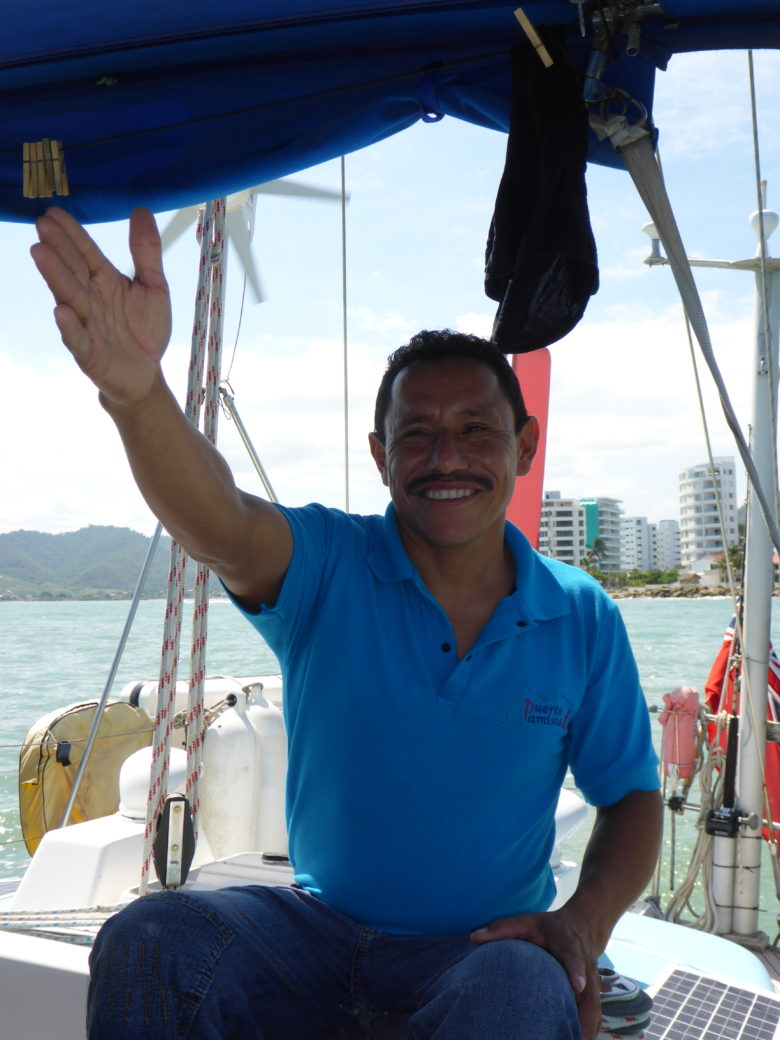Back on the Briny, South Pacific 14th June 2016
Concerned that the earthquakes would have changed the riverbed contours we hired Ariosto to guide us back to the mouth of the Chone river past damaged skyscrapers, but looking at the end route as it appeared on the chartplotter we need not have done.
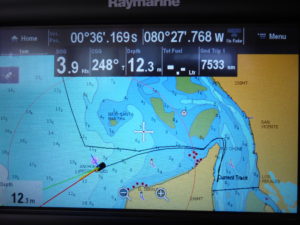
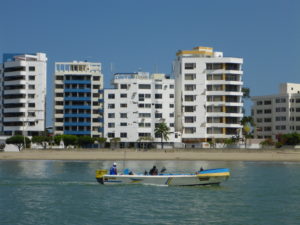
Just moments after Ariosto left us with a cheery wave and smile from his panga pilot boat, a frigate bird and two big, grey backed pacific dolphins welcomed us back into their element. As if that wasn’t enough of a treat, while under sail and not far from the Ecuadorian shore a mother humpback whale and her calf crossed 50 metres in front of our bow making their baby paced way north to the Baha California.
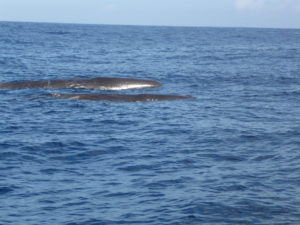
Rob had set a waypoint to the south of the Galapagos so we were heading west under sail and the sun set beyond our bow.
Our friends Jane and Paul, who if you remember helped us through the Panama Canal, are now in the Marquesas aboard Nora J and they wrote enticingly about how lovely are the islands and perfect for sailing. Well they also explained their watch system for the long tropical nights and the long distance to travel.
One of them would be asleep from 8pm till 1am and the other would sleep from 1am to 6am. While on watch they used an egg timer set to 25 minutes or so and they would be free to dose in this time, making a thorough check when the pinger woke them up, and then setting the timer again.
A single hander we were told about would take a long drink of water and then dose, allowing nature to wake him for a pee, killing two birds with one stone he would have had no problems with dehydration or keeping the occasional lookout!
We decided to give Jane and Paul’s tried and tested method a go, but set the start time back to 9pm. As Rob likes a regular 10pm bedtime he was off watch first.
We came upon fishing boats as we sat out the evening reminiscing about our friends in Bahia and remembering how Dave and Tory hung out of their office window waving and yelling ‘Good luck Zoonie’ as we passed.
These fishing boats had quarter mile drift nets out from them, if we were lucky with a flashing light on the end. One panga came up to us and showed us our present heading was good as their nets were over there, with lots of arm waving.
At one stage of my watch it looked as if we were heading for more fishing boats but they turned out to be ships heading north and south in an unofficial shipping lane. I remember in one sleep period thinking where’s that pretty music coming from, it was my alarm waking me up.
This morning we both feel good after a good continuous period of sleep. Despite not having found those delicious SE Trade winds yet, and Zoonie being close hauled with a bit of a heel on, life on board is comfortable as we head for the Galapagos before tacking south to avoid them.
The wind was fickle for a while during Rob’s watch and Henry (wind powered self-steering gear) didn’t know what to do with it, so Rob released the wheel and let Zoonie do her own thing.
“We’ve just done a Rob’s nipple darling.” He was referring to the time on the Stavvy when, during a night watch while crossing the Biscay north bound, Sven the first officer, and the rest of our watch, stood in awe as our 182 foot brig, with almost a full complement of square and fore and aft sails set, was allowed to turn herself 360 degrees in search of wind, before settling back on course, no better off. From thence it was referred to on the paper chart as Sven’s nipple.
Pasta bugs in decline and new to us bird species.
17th June 2016
We have had a blitz double wrapping dried foods in plastic bags and do a daily check for bugs. There will be a celebration on board on the first day we find none. Today could be the day!
Skies and sea are mostly grey at present with the odd clear blue spell. Last night I star and moon gazed, leaning backwards out of the cockpit with my head resting on a winch.
The BIG difference compared to setting off across the Atlantic last New Year’s Eve is the lack of swell. Zoonie has no resistance to her progress and can make the most of the light airs. She is sailing under full main and genoa with a light beam wind at present and it looks set to last. Sometimes we have to motor for a few hours when the wind drops right away but we are mostly sailing.
The new watch system works well, thanks Jane and Paul. We feel more rested in the day and I think we get less dehydrated because we are not up and down so much.
On the second day I made a fish stew from the Spanish mackerel we bought in Bahia market and it lasted three evening meals. As I speak Rob is making a new daisy chain for the fishing line. If you remember the last one was bitten off by a large predator. I did offer him strips of white fabric from an old, very old, pair of knickers but he declined. So it could be fresh fried fish tonight!
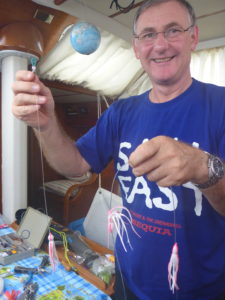
I often ask myself, why are we doing this? The answer is of course many fold but one particular reason is a curiosity about the world and all that goes on in it. This is illustrated clearly when we come across a new to us species of animal or plant. Apart from the awe whales and dolphins bring on a daily basis at the moment we have been visited by swallow tailed gulls with their pretty pale grey heads and pink rimmed spectacles fishing in Zoonie’s wash at night and our first albatross.
The Waved Albatross frequents the Galapagos Islands and breeds on Espanola (Hood Island) which is barely 200 miles from us. So far we have had two visit us which pleases us as they are a near-threatened species. They have whitish heads and a brown body.
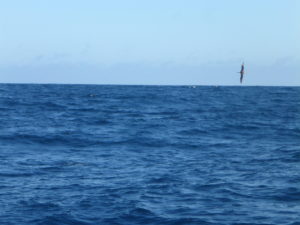
At first we thought it was a pelican but soon ruled this out as the beak is different and a pale limey-yellow. They are impressive to watch flying just above the ocean with a wing-span of up to 95 inches. Our book (Seabirds of the World) says they would be seriously affected if the 1996 plans for long line yellow fin tuna fishing using squid as bait were brought into practice. Well it is now widespread.
Zoonie hardly leaves any wash behind her, her carbon footprint is a drop in the Ocean when she is under sail.
Our days have fallen into a routine of resting, eating, writing and reading and time is passing pleasantly, in two hours we will be on day 5 and tomorrow we will reach our waypoint south of the Galapagos Islands and then our next waypoint will be Hiva Oa in the Marquesas. The wind is backing towards the south east at the moment but it is too fickle to assume we are in the Trades yet.
Rob has just finished his new daisy chain and is setting it astern. I’m a little concerned it may attract birds so we’ll keep an eye on it.
